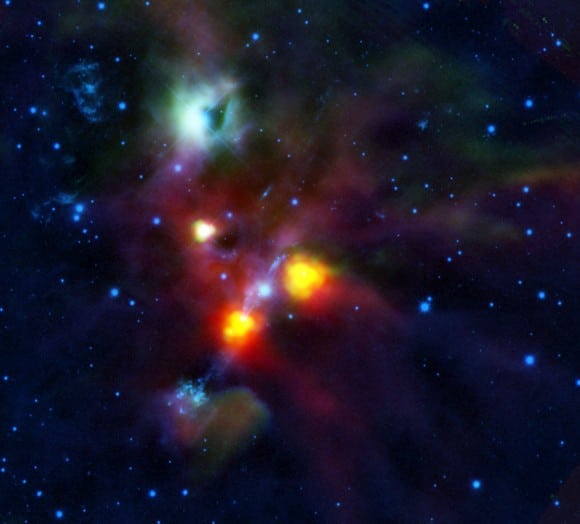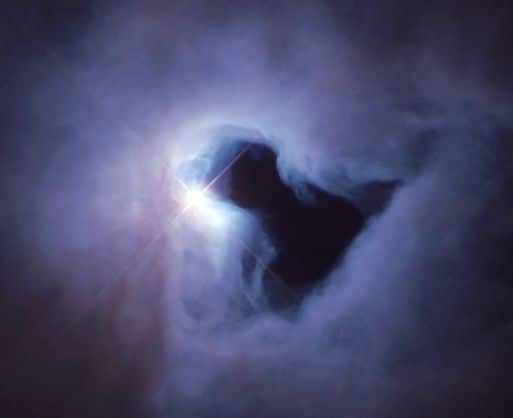All previous descriptions of NCG 1999 said that the ominous black cloud was essentially a condensation of cold molecular gas and dust that was responsible for blocking the light. Astronomers had no reason to think otherwise until the powerful infrared eyes of the Herschel Space Telescope caught a glimpse of the object from space.
Nancy Atkinson

There is a black spot in space in the NGC 1999 nebula, and for years astronomers thought it was just a compressed cloud of gas and dust, blocking light from passing through it. However, the Herschel Space Telescope in Interfero Red, which has the ability to peer into these dense, dense clouds - made an unexpected discovery.
This black patch is actually a hole opened in the side of the nebula by jets and winds of gas from young stellar bodies in this region of space.
"No one has ever seen a hole like this," said Tom Magat of the University of Toledo in the United States. "It's as surprising as knowing you have worms digging under your lawn, only to find one morning they've created a huge gaping hole.
All previous descriptions of NCG 1999 said that the ominous black cloud was essentially a condensation of cold molecular gas and dust that was responsible for blocking the light. Astronomers had no reason to think otherwise until the powerful infrared eyes of the Herschel Space Telescope took a look at the object from space.
When Herschel looked in the direction of this nebula to study nearby young stars, the cloud continued to appear black, even though it wasn't supposed to be. Herschel's infrared instruments are designed to see into such clouds. So either the cloud was very dense or something was wrong. Further testing using ground telescopes yielded the same result. Therefore the astronomers came to the conclusion that this patch appears black not because it consists of a thick pocket of gas but rather a completely empty area. Someone drilled a hole through the cloud.

Astronomers believe that the hole must have opened when a narrow jet of gas from one of the young stars in the area cut through the layer of dust and gas that forms NGC 1999. The strong radiation from nearby mature stars may also help clean the hole. Whatever the exact description of the chain of events, it is an important glimpse into the way newborn stars disperse their birth clouds.

4 תגובות
No. Ben-Nur
I was happy about your response
This helps a bit to remove the fog, although it still leaves questions about where the thrown gas is and where the stars are.
But we learned in cosmology that you can talk about mass even if it is missing, so now we will talk about stars even if they are missing.
And maybe the stars were young but made of antimatter and they happily and happily merged with the bully mass that was the hole and left us with no stars and no mass but with a big hole.
What can I tell you, the science of cosmology is full of surprises and rich in hypotheses
Good Day
Sabdarmish Yehuda
Peace be upon Yehuda
Below is a summary of Dr. Flimmer's answer that appears on the Universe-Today website.
Apparently, the question you raised in your response (No. 1) also came up there
Dr. Plimer emphasizes that the model requires two main components:
1. For the star to be young, i.e. to have enough material around it.
2. That the young star will have a strong enough magnetic field.
If these two conditions are met then the magnetic field causes the surrounding matter
the star to be thrown out or to collapse into the star.
Dr. Plimer points out that contrary to what is said in the article (and also appears in the original article in Universe-Today)
After all, in recent surveys, at least 300 similar "holes" were discovered in such clouds,
He calls them Nebula clouds, one of them is a cloud in the Orion group.
The question is who drilled this hole and when does it reach us?
Good night
In many places in the universe, new stars are formed, so why aren't there many more holes like this?
Why don't you see the young stars there?
Where is the gas thrown by the stars?
I think the statement that radiation from young stars creates a hole in space is a bit too "bold".
Good night
Yehuda